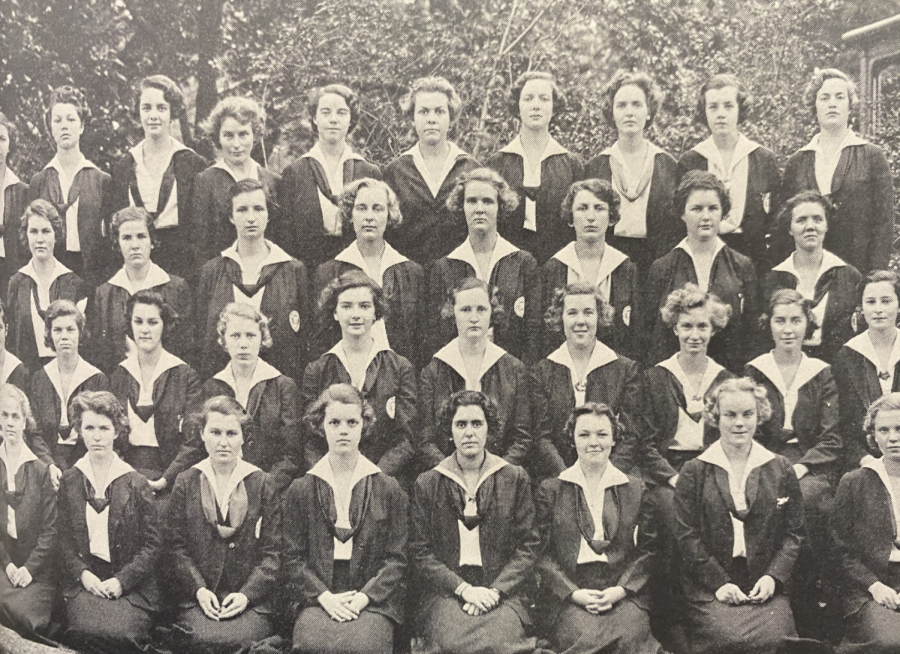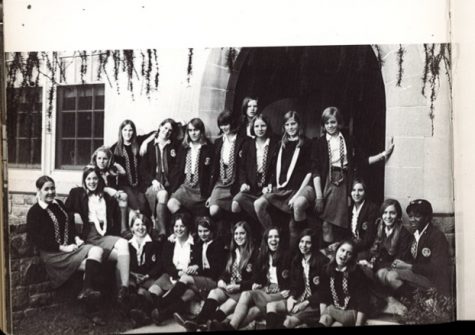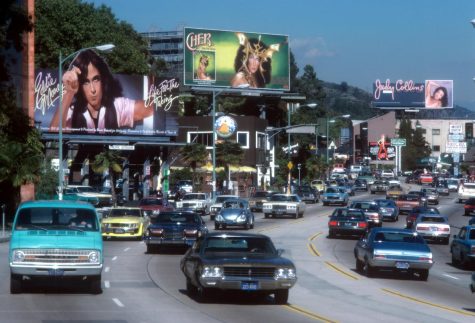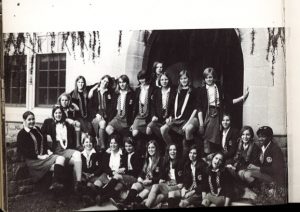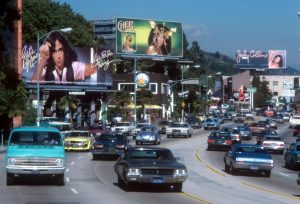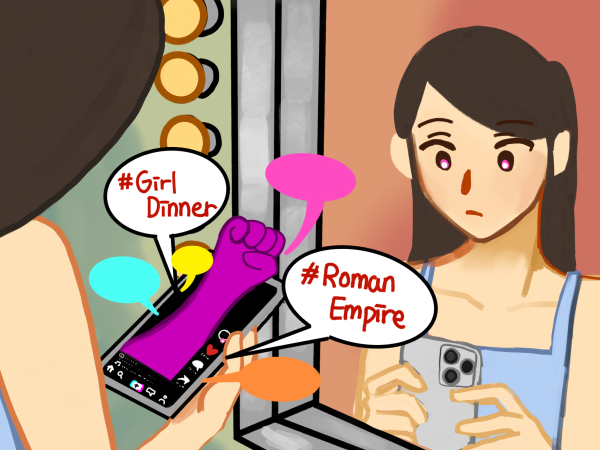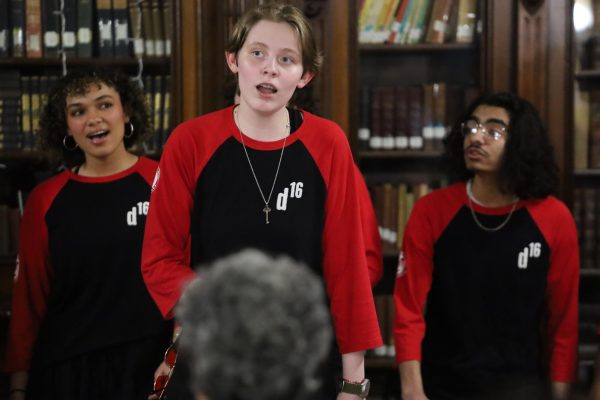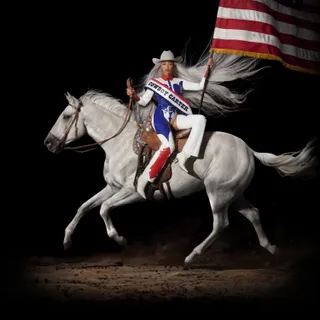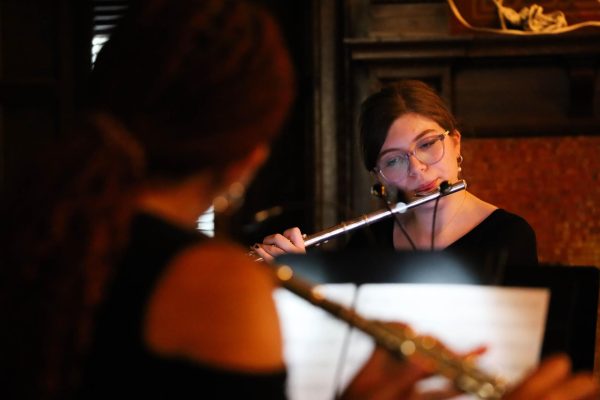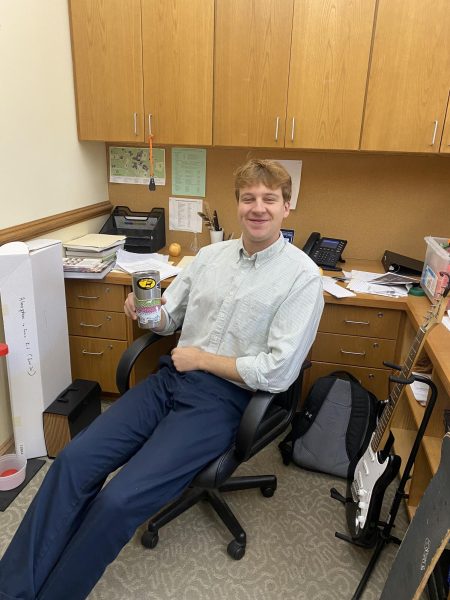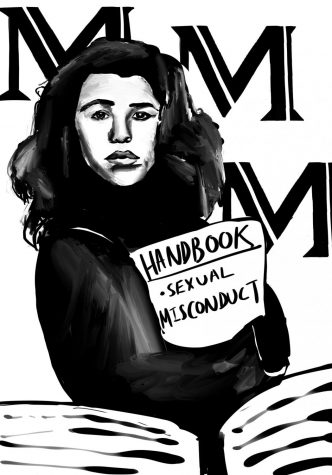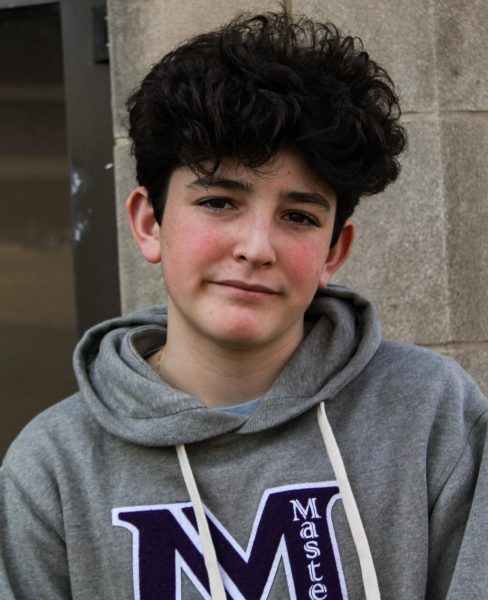CRACKING THE CODE: Masters dress code through the decades
Imagine this: It’s the early 1900’s and only women fill the classrooms at Masters. Everyone’s hairstyle is the same, and so are the length of their skirts. The only way that these young women could differentiate themselves was how they styled their uniforms with decorations such as bows, necklaces, ties, and handkerchiefs.
In a Masters student handbook from the 1963-1964 school year, the dress code stated that “each girl is expected to be suitably dressed and well-groomed at all times.”
Around the early 1970s, Masters, while still an all-girls school, removed the uniform and created a dress code. Alumna Katherine Horn ‘80 explained that “The thought of the dress code was to teach us basic personal hygiene. It taught us to come to school put together, and to not look dirty or tattered, but like you cared.”
Even 20 years later, there was still talk about the dress code and finding the balance between expression and regulation.
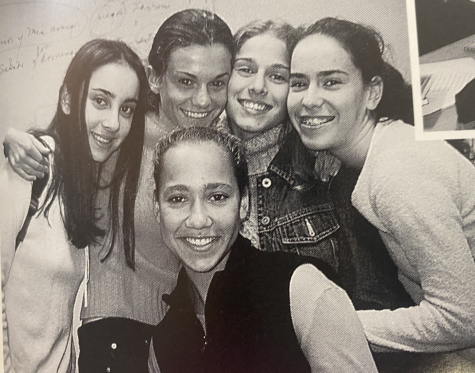
Even as a coed school, alumna Natasha Bansgopaul ‘04, remembers the ways her peers would get away with breaking the dress code when they had to wear buttoned-up shirts and khakis all day.
She said, “I remember boys in my grade walking around campus when it was hot and they had taken off their button-up shirt, and a teacher would tell them to button it up, even though they had a shirt under it. So there would be guys who would just have their shirt hanging over their shoulder in the event of somebody saying that they needed to be in dress code.”
Bangsgopaul saw a benefit in the dress code, “Fridays [jeans day] was the day that everybody used fashion and creativity to do something different within the realms of permissibility. It was good because it gave us the opportunity to focus on our schoolwork.”
Even six years later, there were no significant changes to the dress code. Alumna Hannah Miller ‘10 described her thoughts on the dress code.
Miller said, “I did like the keynote. I preferred the put-together overarching approach to the dress code because, at the end of the day, we were there to learn and be in a classroom.”
In 2016, Sarah Schurr ‘19 gathered a group of students together and started a petition against the dress code. This group of students gathered physical signatures all around school and suggested a “dress philosophy” which many neighboring private schools were practicing at the time.
Scheuer said she was fed up with the dress code “Because education is meant to inspire a more perfect future. And what are we doing? What are we doing by promoting these? This paints sexist and classist ideas.”
Scheuer thought about the implementation of the dress code during 2016 when the presidential election was occurring. She said “there was a lot of perpetuating rape culture and classism. For one in big ways, there were mostly female students being approached and reprimanded for what they were wearing on a daily basis, it made people extremely uncomfortable. Not to mention that Masters prides itself so much in being a place that promotes freedom of expression for students. And there were a few ways you could express yourself.”
Today, however, Masters has no formal dress code because of Schurr’s work. In 2019, Former Head of Upper School Matthew Ives replaced the dress code with a “dress philosophy.”
The dress philosophy states: “Though no specific items of clothing are prohibited this does not mean that anything goes. We ask you to be thoughtful and respectful and to seriously consider the messages you are sending through the clothing you choose to wear. If a teacher in your class asks you to change or has a problem with your outfit, please make the requested change and bring the issue to me or the Dean of Students if you disagree with your teacher.”
Freshman Ellie Maiorino ‘25 spoke on her views regarding the current dress philosophy, noting the sense of creative independence it provides. She said, “I think it[the dress philosophy] lets people express themselves in ways they want without being judged.”
This being her 24th year as a teacher at Masters, Upper School Math teacher Michelle Dennis has seen many changes to the dress code. Dennis wore a uniform her whole life.“ It didn’t squelch my individuality [uniform]. The argument that teenagers often say about expressing their individuality through clothing is bogus. I express who I am through my personality, not through my clothing, because that is superficial.”
In a recent interview, Dennis spoke about her opinions regarding a dress code. She said, “I feel strongly that when we come to a place of learning it should be a mutual respect that we shouldn’t dress as we would dress for a Saturday morning, lounging around the house or going out.”
Eileen Dieck, the Professional Development Coordinator, has been at Masters for eighteen years and seen the changes through the dress code. Dieck shared similar opinions of the dress code from Dennis.
She said, “I prefer the dress philosophy in that there isn’t shaming of people for what they wear. However, I would also like to see there be a balance struck so that people are conscious of what they’re wearing for the work that they do, whether they’re a student or a teacher, or staff member.”
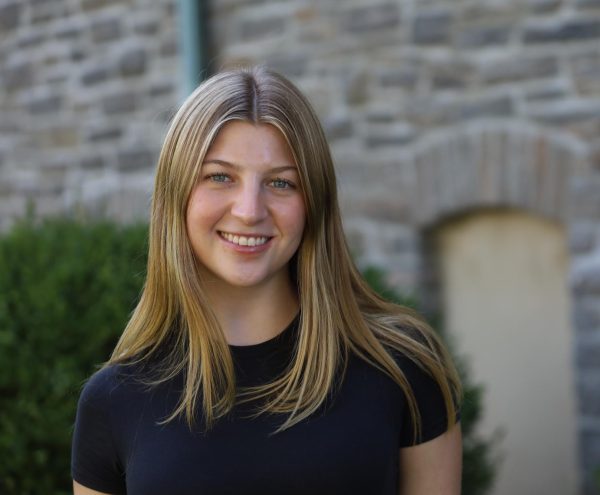
Lily Zuckerman, a fifth-generation New Yorker, loves to ask questions. Since sophomore year, she has worked as a Student Correspondent for her town’s...



